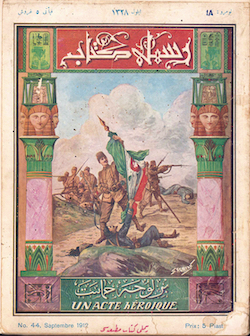 The Turco-Italian War of 1911-12 unfolded in the Ottoman province of Tripolitania, roughly corresponding to modern-day Libya, and it gradually extended to the Adriatic Sea, the Aegean Sea, and the Red Sea. In Turkey, this conflict is referred to as the Trablusgarp Harbi (War of Tripoli), while in Italy, it is known as the Guerra di Libia (The Libyan War.)
The Turco-Italian War of 1911-12 unfolded in the Ottoman province of Tripolitania, roughly corresponding to modern-day Libya, and it gradually extended to the Adriatic Sea, the Aegean Sea, and the Red Sea. In Turkey, this conflict is referred to as the Trablusgarp Harbi (War of Tripoli), while in Italy, it is known as the Guerra di Libia (The Libyan War.)
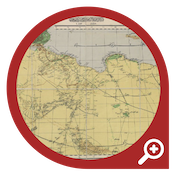 Towards the end of the 19th century, Italy had fallen behind other European powers in terms of acquiring overseas colonies. While various empires were expanding globally, Italy began to nurture economic interests in Tripoli, which held a strategic position across the Mediterranean Sea. This interest grew significantly, particularly after the occupation of Egypt in 1881 and the French annexation of Tunisia and Algeria in 1882.
Towards the end of the 19th century, Italy had fallen behind other European powers in terms of acquiring overseas colonies. While various empires were expanding globally, Italy began to nurture economic interests in Tripoli, which held a strategic position across the Mediterranean Sea. This interest grew significantly, particularly after the occupation of Egypt in 1881 and the French annexation of Tunisia and Algeria in 1882.
These events signified Italy's ambitions towards Tripoli, which was the last remaining Ottoman territory in North Africa. In the year 1900, a clandestine agreement was forged between France and Italy, with France setting its sights on Morocco and Italy coveting Tripoli.

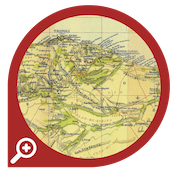 From 1902 onwards, Italy began implementing a policy of "peaceful penetration" in Tripoli, creating enterprises financed by Banco di Roma to establish an economic foothold before initiating a full-scale invasion. The Ottoman government, which had only nominal control in Tripoli, exerted significant effort to curb Italian economic expansion, even with some success. The economic development ceased, and Banco di Roma faced financial difficulties, seeking assistance from British and German financiers to cover its debts to shareholders. The bank also urged the government to protect its investments in Tripoli and enhance the value of its land holdings. Banco di Roma had invested about $4-5 million in Tripoli by 1911. Furthermore, the Italian government had set up schools, post offices, sent archaeological expeditions, and encouraged Italians to undertake various initiatives.
From 1902 onwards, Italy began implementing a policy of "peaceful penetration" in Tripoli, creating enterprises financed by Banco di Roma to establish an economic foothold before initiating a full-scale invasion. The Ottoman government, which had only nominal control in Tripoli, exerted significant effort to curb Italian economic expansion, even with some success. The economic development ceased, and Banco di Roma faced financial difficulties, seeking assistance from British and German financiers to cover its debts to shareholders. The bank also urged the government to protect its investments in Tripoli and enhance the value of its land holdings. Banco di Roma had invested about $4-5 million in Tripoli by 1911. Furthermore, the Italian government had set up schools, post offices, sent archaeological expeditions, and encouraged Italians to undertake various initiatives.
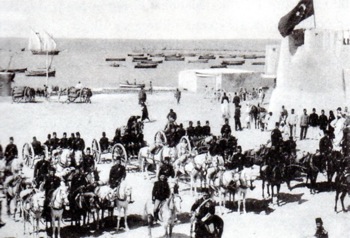
Although both Italy and the Ottoman Empire had been part of the Triple Alliance since 1882, Germany harboured concerns about Italy's control of Tripoli. The Germans were apprehensive that Italy might employ the region as a springboard for further expansion, which would be detrimental to German interests. By September 1911, the Tripoli issue had become a prominent subject of debate in Italy, attracting considerable media attention. The prevailing sentiment was that the Ottoman government had treated Italians unfairly, and there were suspicions of German involvement in intrigues. Italy commenced a quest for a pretext for war. On 23 September, the Italian Ambassador in Istanbul delivered his government's diplomatic note to the Sublime Porte, indicating that Turkish officers in Tripoli were stirring up the local population against Italians, thereby endangering Italian lives. Istanbul's response was that there was no imminent threat to Italians, and the Ottoman Empire possessed the capability to maintain security within its territory.
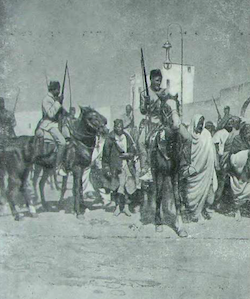
Simultaneously, the Sublime Porte initiated diplomatic efforts to avert a conflict. A cable dispatched to the Ottoman Embassies in London, Paris, and Berlin conveyed a clear message: "Every conceivable effort, even the seemingly impossible, should be made to reach an agreement with Italy. Should they commence hostilities by landing troops or by any other means, we will be confronted with the peril of a severe deterioration in our domestic situation." The Ottoman Ambassador in Rome, Seyfettin Bey, engaged with the Italian Minister of Foreign Affairs, San Giuliano, who left no room for ambiguity. They expected the Ottoman Empire to peacefully vacate Tripoli, and should this not come to pass, Italy would not hesitate to resort to military force.
 In an attempt to provide support for the Turkish garrison in Tripoli, as an Italian invasion seemed imminent, the Turkish Chief of Staff decided to dispatch material aid to the province. Escaping the pursuit of Italian warships, the Turkish vessel Derne, loaded with guns and ammunition, arrived in the town of Tripoli on 25 September. The arrival of the Derne offered significant moral support to the local population.
In an attempt to provide support for the Turkish garrison in Tripoli, as an Italian invasion seemed imminent, the Turkish Chief of Staff decided to dispatch material aid to the province. Escaping the pursuit of Italian warships, the Turkish vessel Derne, loaded with guns and ammunition, arrived in the town of Tripoli on 25 September. The arrival of the Derne offered significant moral support to the local population.
The following day, four Italian warships – Varese, Napoli, Roma, and Garibaldi – blockaded Tripoli. Within a few days, the number of ships on patrol duty would increase to 22. With the Derne's arrival, the Italian government now had the excuse it had been seeking. On 28 September, Italy issued a 24-hour ultimatum to Istanbul, demanding the presence of Italian troops in Tripoli to protect the local Italian population, which then numbered hardly a thousand, with scarcely two hundred having come from Italy.
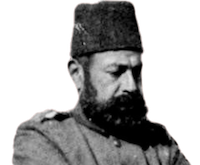
Simultaneously, the Ottoman Minister of War, Mahmut Şevket Pasha, was sending telegrams to the garrison commander, Colonel Neşet Bey, providing him with instructions on how to respond should the Italians initiate an invasion. While the Sublime Porte was engaged in diplomatic efforts to avert a war, Neşet Bey and his troops were already making preparations for the defense of the region, in consultation with Mahmut Şevket Pasha.
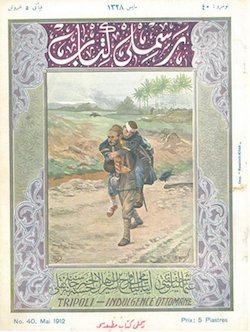 The plan was straightforward. In the event of an invasion, Neşet Bey's initial objective was to attempt to halt the Italian advance at the beachhead. If this proved unsuccessful, new battalions were to be formed using reserves, and a strategy of engaging the enemy in a tactical retreat to Garyan was to be implemented. In this scenario, combat would primarily involve small units rather than a large-scale offensive. The plan also assumed that the Italian landings would occur in Tripoli and Benghazi, without attempts to venture inland. Mahmut Şevket Pasha additionally instructed Neşet Bey to establish contact with the leader of the local Sanusi tribe, who held significant influence over the Muslim population.
The plan was straightforward. In the event of an invasion, Neşet Bey's initial objective was to attempt to halt the Italian advance at the beachhead. If this proved unsuccessful, new battalions were to be formed using reserves, and a strategy of engaging the enemy in a tactical retreat to Garyan was to be implemented. In this scenario, combat would primarily involve small units rather than a large-scale offensive. The plan also assumed that the Italian landings would occur in Tripoli and Benghazi, without attempts to venture inland. Mahmut Şevket Pasha additionally instructed Neşet Bey to establish contact with the leader of the local Sanusi tribe, who held significant influence over the Muslim population.
On 29 September 1911, with the backing of the British and French governments and without waiting for the 24-hour ultimatum to run its course, Italy declared war on Turkey. Just two hours prior to this declaration of war, the Italian fleet had sunk two Turkish torpedo boats off Preveza in the Adriatic Sea. Grand Vizier Hakkı Pasha, who had maintained confidence in a peaceful resolution until the very last moment, resigned from his post. He was succeeded by Said Pasha.
The situation in Tripoli was one of utter chaos, and Ottoman authorities struggled to regain control of the city. Local residents were encouraged to join volunteer battalions, but many opted to remain in their homes and defend themselves. There was a severe shortage of weaponry, ammunition, and vehicles. Colonel Neşet Bey found himself in command of only 8,000 ill-equipped men.

On 30 September, an Italian officer landed and sought surrender. Neşet Bey sought guidance from Istanbul on how to respond. Mahmut Şevket Pasha, still hopeful for a diplomatic resolution, believed it was premature to engage in combat. He instructed Neşet Bey to cede some coastal areas to the Italians and withdraw inland without resisting the enemy.
The following day, the Italians demanded the surrender of two Turkish warships anchored in Tripoli, the Derne and the gunboat Seyyad-ı Derya. Instead of relinquishing the vessels to the enemy, their commanders opted to scuttle the two ships. On the same day, Derna came under bombardment, and the cable connecting Tripoli to Malta was severed, cutting off communication with Istanbul.
Admiral Farevelli, the commander of the Italian invasion force, delivered an ultimatum to Neşet Bey on 2 October, requesting the surrender of Tripoli. When this request was rebuffed, Italian naval artillery commenced shelling the city on the following day. Meanwhile, in compliance with Mahmut Şevket's directives, Neşet Bey's forces were in the process of retreating inland. This withdrawal led to disorder in the city, and upon Acting Governor Besim Bey's appeal, Neşet Bey dispatched a few units back to Tripoli to restore order.
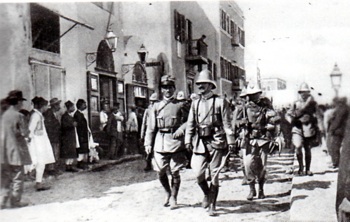
Italian troops landed in Tripoli on 5 October, just one day after invading Tobruk, and they encountered little resistance. The occupation of the city was swiftly completed within a day, with Admiral Borea Ricci assuming the role of the new governor and the arrest of Besim Bey. Subsequently, Derna was captured on 16 October, Benghazi on 20 October, and Khoms on 21 October. At that time, the Turkish military presence in Tripoli was significantly weaker compared to the Italian invasion force, consisting of 30,000 troops, 6,000 animals, 103 artillery pieces, 800 trucks, and four airplanes.
The Empire was already grappling with various insurgencies in regions such as Yemen, Macedonia, and Albania. Moreover, the disruption of land routes to Tripoli posed significant logistical challenges, rendering support incredibly difficult, if not unfeasible. Additionally, the Italian navy held a dominant position in the Mediterranean. Meanwhile, the local tribes, who shared the Islamic faith, displayed limited interest in the conflict between the Turks and Italians. The Sanusi tribe, however, offered crucial support to the Turkish resistance. These resistance forces, comprised of Turkish troops and local militia, gathered in Garyan.
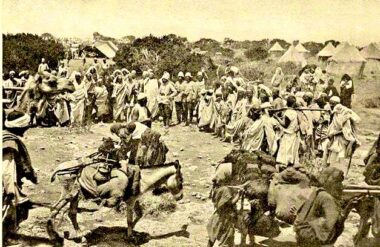
Simultaneously, a strong reaction was brewing among young Turkish officers against the Italian invasion. They could not reconcile with the fact that a portion of their homeland was under enemy control, compelling them to desire involvement in the Turkish military efforts in Tripoli. Almost immediately after learning of the invasion, Major Enver Bey, who at the time served as the Ottoman military attaché in Berlin, made his way to Salonica. Here, he proposed a battle plan to the Committee of Union and Progress, which entailed the Turkish forces drawing the enemy into the desert and eliminating them through nocturnal raids. Following the acceptance of his proposal, Enver Bey journeyed to Istanbul.
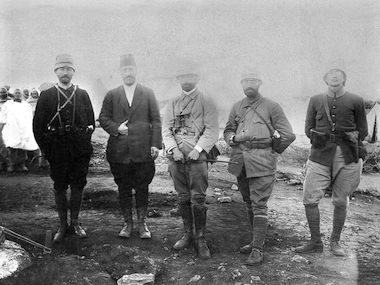
Enver Bey was not alone in his eagerness to journey to Tripoli. A group of officers, including Mustafa Kemal Bey, Eşref Bey, Süleyman Askeri Bey, the military attaché in Paris, Ali Fethi Bey, Major Halil Bey, Major Nuri Bey, Captain Fuat Bey, and Captain Ali Bey, were among those actively seeking ways to reach the region. Back in Istanbul, Enver Bey and Eşref Bey met with Mahmut Şevket Pasha, who conveyed that the Empire could not engage in an all-encompassing war with Italy. Instead, they would attempt to protect the province using local resources. Mahmut Şevket Pasha's counsel to the young officers was to undertake the mission covertly. If the government opted for full-scale warfare, they would receive comprehensive support. However, if diplomacy prevailed, the responsibility would fall squarely on their shoulders.
Enver Bey, accompanied by Rauf Bey and Ömer Fevzi Bey, all under assumed names and posing as reporters, left Istanbul on 1 November. After a two-week journey, they reached Alexandria and departed for Benghazi eight days later, following a brief sojourn in Egypt. Mustafa Kemal Bey set out from Istanbul on 15 November, masquerading as journalist Mustafa Şerif Bey. In Alexandria, he met Nuri Bey and Fuat Bey, and despite the risks associated with potential British capture, they eventually arrived in Tobruk.
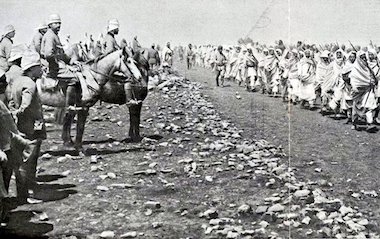
The resistance had commenced even before the arrival of the Turkish officers, and it had already yielded successful attacks against the Italians. However, these young officers brought a higher level of coordination to these efforts and promptly began the training and organization of local forces. Alongside the Turkish units already stationed in the region, they proved highly effective in their endeavors. In a later newspaper interview, Enver Bey remarked, "Upon my initial arrival here, I encountered only 900 desert fighters. Now, I command 16,000 trained soldiers." The army they had forged also succeeded in capturing two machine guns, 250 rifles, two artillery pieces, and ammunition from the Italians.
Turkish endeavours received substantial support from the Sanusi tribe, led by Ahmed Şerif, who declared a "holy war" against the Italians. Mustafa Kemal Bey was tasked with ensuring and organizing Sanusi participation. Alongside him, the Sanusi had immense trust in Enver Bey, who happened to be the son-in-law of the Caliph.
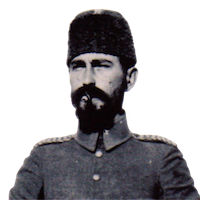
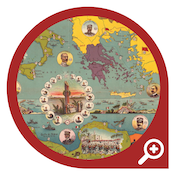 According to the new command structure in Tripoli, Neşet Bey assumed leadership of the forces in Tripoli, Major Mustafa Kemal Bey became the commander in Tobruk, and Major Enver Bey in Benghazi. The first organized attack was initiated on 23 September, when Neşet Bey and Ali Fethi Bey led their troops in a successful offensive against the Italians, resulting in 46 officers and 463 men as casualties on the Italian side.
According to the new command structure in Tripoli, Neşet Bey assumed leadership of the forces in Tripoli, Major Mustafa Kemal Bey became the commander in Tobruk, and Major Enver Bey in Benghazi. The first organized attack was initiated on 23 September, when Neşet Bey and Ali Fethi Bey led their troops in a successful offensive against the Italians, resulting in 46 officers and 463 men as casualties on the Italian side.
On 5 November 1911, the Italian government declared the annexation of Tripoli. Istanbul's protests had no effect on altering the course of the war. During the month of November, the Italians managed to recapture some trenches they had previously lost. In the subsequent months, the resistance began to gain the upper hand. Mustafa Kemal's units effectively engaged the Italians in Tobruk and Derna – his units achieved victory in the Battle of Tobruk on 22 December 1911 – while Enver Bey similarly succeeded in Benghazi and Neşet Bey performed admirably in Tripoli. They had succeeded in halting the Italian advance, but they could not compel the Italians to evacuate Tripoli. The Italians received reinforcements, and at one point during the course of the war, their numbers swelled to 100,000.
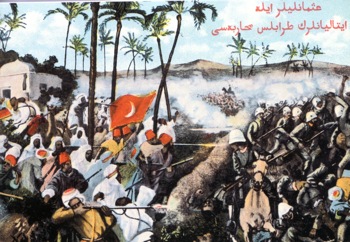
In November 1911, Italy initiated preparations to attack the Dardanelles, but the plan was abandoned due to objections from Russia, which was concerned about its commercial interests. Instead, they sank two Turkish vessels anchored in the port of Beirut. In January 1912, an Italian fleet entered the Red Sea, where it sank some Turkish ships, reached Yemen, which was in the midst of a rebellion, and bombarded the port of Hudaidah.
Meanwhile, the German Emperor, Kaiser Wilhelm II, decided to act as a mediator between the warring parties. On 25 March 1912, he met with the King of Italy, Vittorio Emanuele III, in Venice. However, this meeting yielded no results.
The Italian navy commenced its bombardment of the Dardanelles on 18 April 1912, which forced the Ottoman government to close the Straits to all forms of naval traffic. This led to substantial commercial losses for Russia, whose grain trade was affected, as well as for Britain, Greece, Bulgaria, and Romania. Istanbul eventually reopened the Straits to merchant shipping on 10 May.
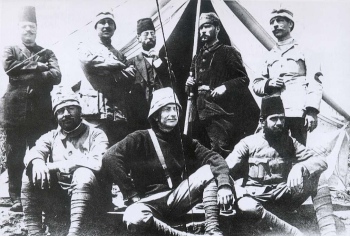
On 5 May 1912, Italian forces launched an invasion of the island of Rhodes, swiftly capturing all the Dodecanese Islands in the Aegean Sea within ten days. Simultaneously, the conflict in Tripoli continued, with the Italians gaining the upper hand. Turkish forces in Tripoli were compelled to retreat to the desert in early June 1912, and the Italians gained control of the western shores during that summer. On 12 July, five Italian warships attempted to enter the Dardanelles, but this endeavor failed due to the presence of steel nets and the heavy artillery fire from the Turks.
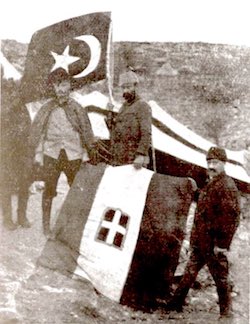
On 13 August 1912, peace negotiations commenced between Turkey and Italy while fighting persisted. The outbreak of the Balkan War and the pressing need for Turkish officers and manpower in other theaters of war forced the Sublime Porte to accept Italy's terms. Consequently, a peace treaty was signed between Italy and the Ottoman Empire in Ouchy, a lakeside district of Lausanne in Switzerland, on 18 October 1912.
According to the Ouchy Treaty, Tripoli was ceded to Italy with autonomous status, but Turkey was to act as the protector of the rights of the Muslims in the region. The Dodecanese Islands were to be returned to the Ottoman Empire at the conclusion of the Balkan Wars. However, the Italians violated the treaty's relevant article and did not return the islands. This incident marked the conclusion of the Ottoman Empire's centuries-long authority in the Aegean Sea.
The war drew to a close when the situation began to favor the resistance. The Italians had managed to advance more than 3-4 kilometers inland, and the fighting was proceeding favorably for the Turks and their local supporters in Tripoli and Benghazi. It was exceedingly challenging for Istanbul to convey to the people in the province that peace had been established, leaving them to determine their own destinies.
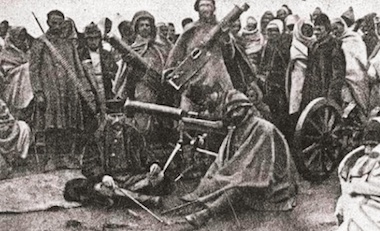
"Ah, this Tripoli affair! As I told you, it became a personal matter of honour for me. Do you know that I am guiding the Arabs here towards the Italians with their wives and children? I promise them that even if the Sultan lets them down, I won't. How can I abandon these brave people to the Italians who intend to harm them? God, there are significant difficulties in my country as well. But, no, I do not want to see that the Bedouins are more faithful to the promises they had made than I am. Retracting a word of honour is nothing but cowardice, and besides, the Grand Chief of Sanusi is sending me the message that he will always obey my orders. God, what should I do? War has broken out with Montenegro, and other Balkan states are likely to follow suit due to the problems with Europe. Under these circumstances, what would our issue with Italy mean?" (A letter sent by Enver Bey to a friend of his only a few days before the armistice)
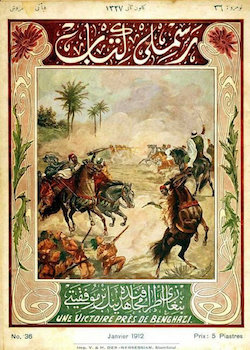 Meanwhile, Neşet Bey remained in the dark about the peace conditions, and the local population was uncertain about their future. Enver Bey initiated communications with Istanbul, warning that the resistance would persist. The Sanusi expressed their displeasure with the armistice.
Meanwhile, Neşet Bey remained in the dark about the peace conditions, and the local population was uncertain about their future. Enver Bey initiated communications with Istanbul, warning that the resistance would persist. The Sanusi expressed their displeasure with the armistice.
The evacuation of Tripoli and Benghazi, which commenced in December 1912, experienced delays due to inefficient communication between Istanbul and Tripoli, as well as resistance from some Turkish commanders and local militia. Turkish officers were compelled to depart the province, but they took measures to ensure that supplies were left behind for potential use by the Sanusi. The final contingent of Turks, including Neşet Bey, departed Tripoli on 15 January 1913.
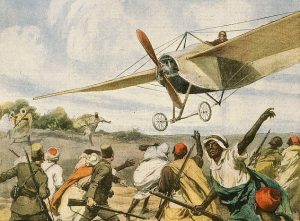
The Turco-Italian War witnessed several milestone events in military history. In Tripoli, Italy mobilized its Italian Aviation Battalion under the command of Captain Carlo Piazza, a renowned racing pilot. On 23 October 1911, Piazza made history's first reconnaissance flight near Benghazi in a Blériot XI aircraft. Then, on 1 November 1911, Second Lieutenant Giulio Gavotti carried out the world's first aerial bombardment mission, dropping four bombs on two Turkish-held oases. In March 1912, Captain Piazza conducted the first-ever photo-reconnaissance flight in history.
Meanwhile, the Turks conducted the world's first anti-aircraft operation in history. The first aircraft to crash in a war was Lieutenant Piero Manzini's, shot down on 25 August 1912, and the first aircraft to be captured belonged to Captain Moizo, on 10 September 1912.
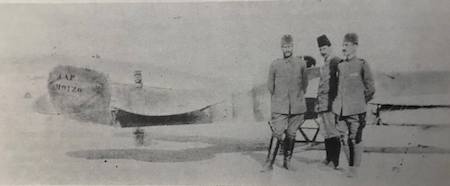
The Turco-Italian War of 1911-12 marked the initial conflict in a series of wars spanning over a decade that ultimately contributed to the decline of the Ottoman Empire. While it showcased the emergence of a new generation of young officers, it also revealed the Empire's weakness in conducting a large-scale war, with its Navy lacking the capacity to play a decisive role. This weakness provided the impetus for Russia and the Balkan States to trigger subsequent conflicts. Furthermore, it signified the first instance in which the Ottoman Empire lost a territory predominantly inhabited by Muslims. The Turco-Italian War significantly influenced both Turkish and Italian domestic politics. Notably, the roots of Arab nationalism can be traced back to Tripoli during this period.
![]()
Sources consulted:
- Baykurt, C., “Son Osmanlı Afrikası’nda Hayat: Çöl İnsanları, Sürgünler ve Jön Türkler” (Life in the Last Ottoman Africa: Desert People, Exiles and Young Turks), Türkiye İş Bankası Kültür Yayınları, Istanbul, 2009 (prepared by İnan, A.).
- Childs, T.W., “Trablusgarp Savaşı ve Türk-İtalyan Diplomatik İlişkileri” (The Tripolitanian War and Turco-Italian Diplomatic Relations), Türkiye İş Bankası Kültür Yayınları, Istanbul, 2008 (translated by Berktay D. from the English original “Italo-Turkish Diplomacy and the War over Libya 1911-1912” published in 1990).
- Koloğlu, O., “500 Years in Turkish Libyan Relations”, Center for Strategic Research, Ankara, 2007.
- Kurtcephe, İ., “Türk-İtalyan İlişkileri 1911-1916” (Turkish-Italian Relations 1911-1916), Türk Tarih Kurumu, Ankara, 1995.
- Kutay, C., “Trablusgarb’de Bir Avuç Kahraman” (One Handful of Heroes in Tripolitania), Tarih Yayınları, Istanbul, 1963.
- Şıvgın, H., “Trablusgarp Savaşı ve 1911-1912 Türk-İtalyan İlişkileri” (The Tripolitanian War and Turco-Italian Relations 1911-1912), Atatürk Araştırma Merkezi, Ankara, 2006.
PAGE LAST UPDATED ON 16 DECEMBER 2023